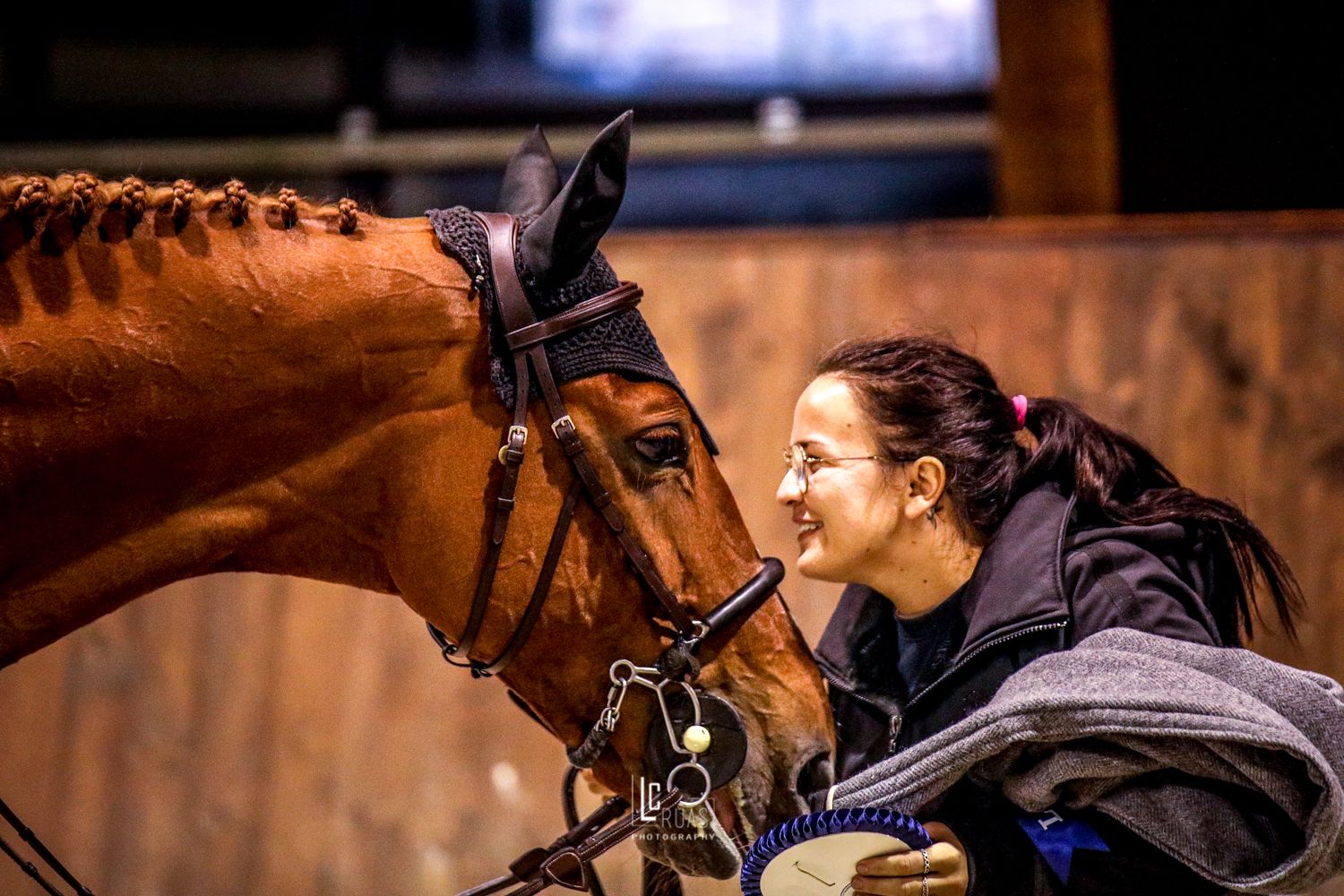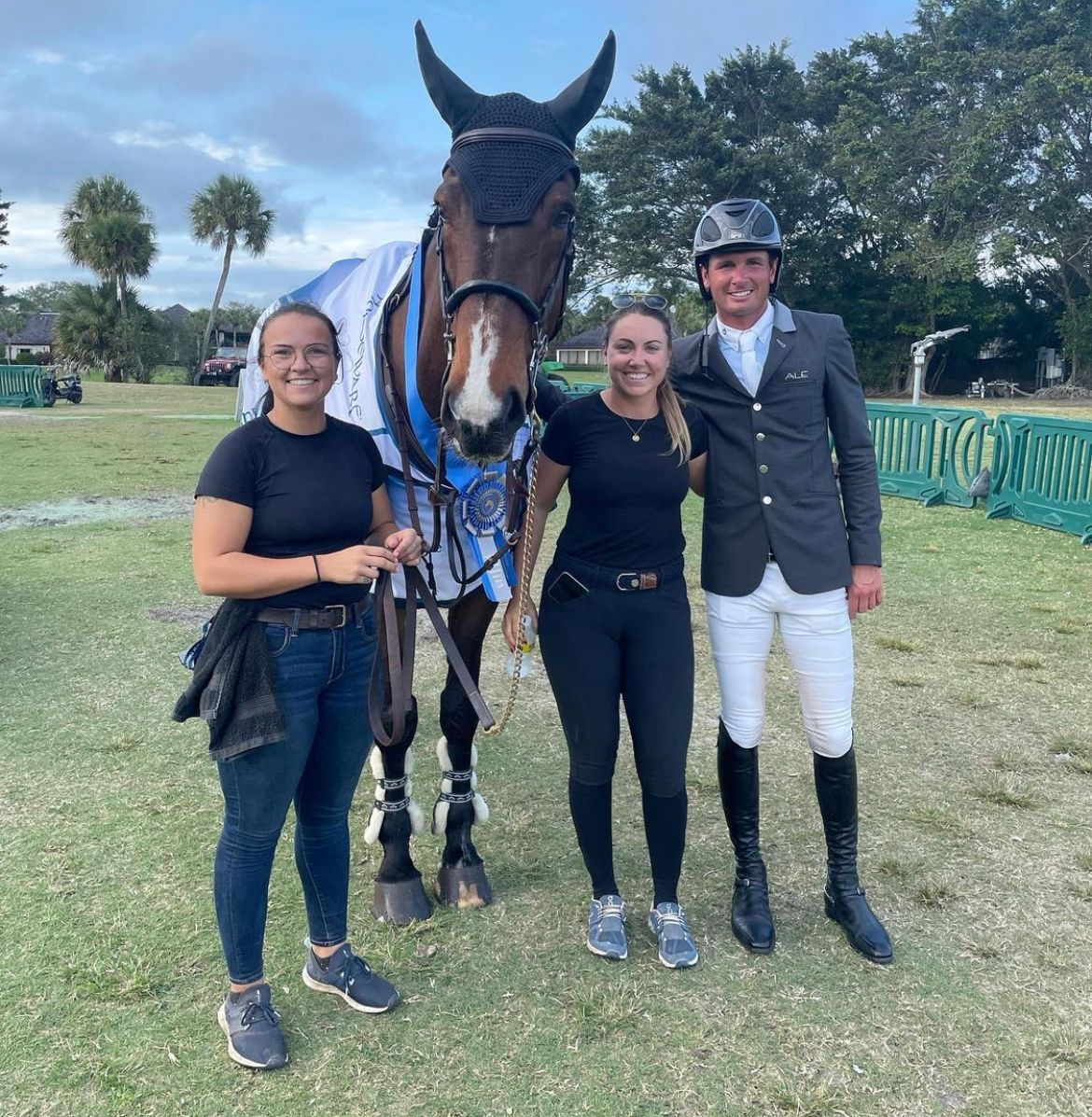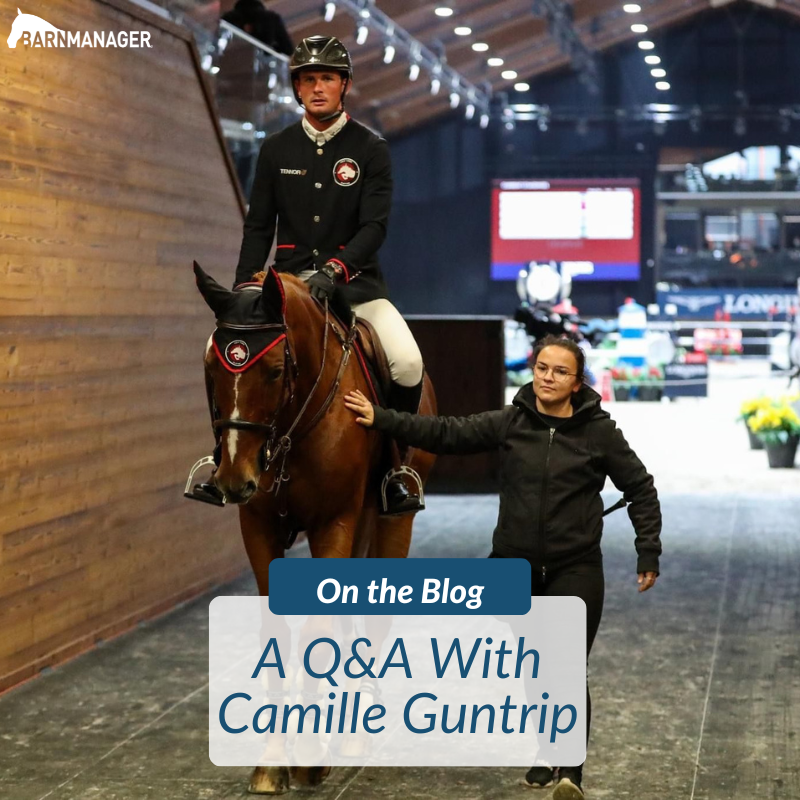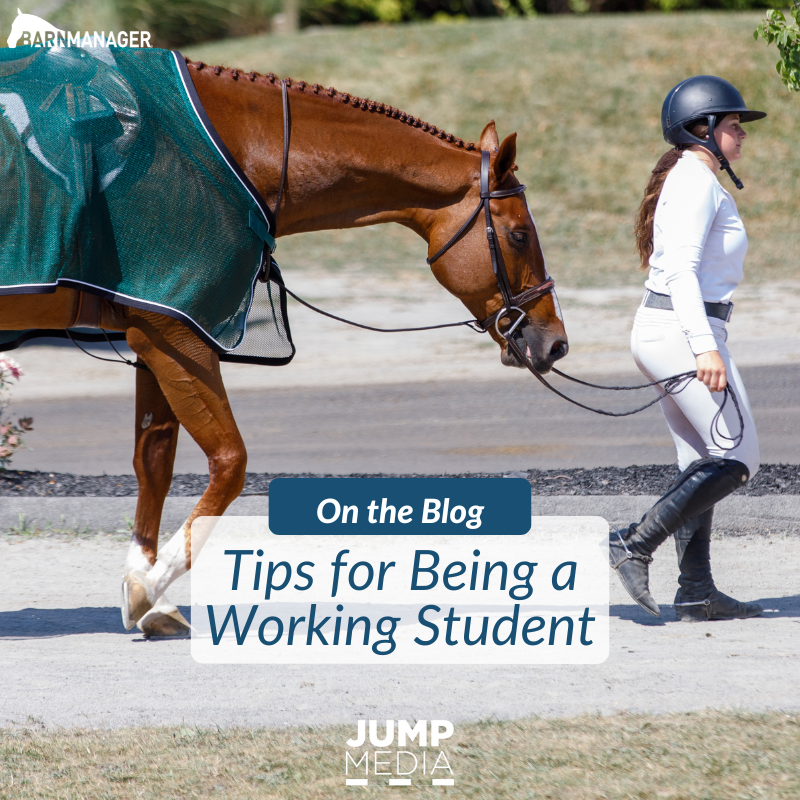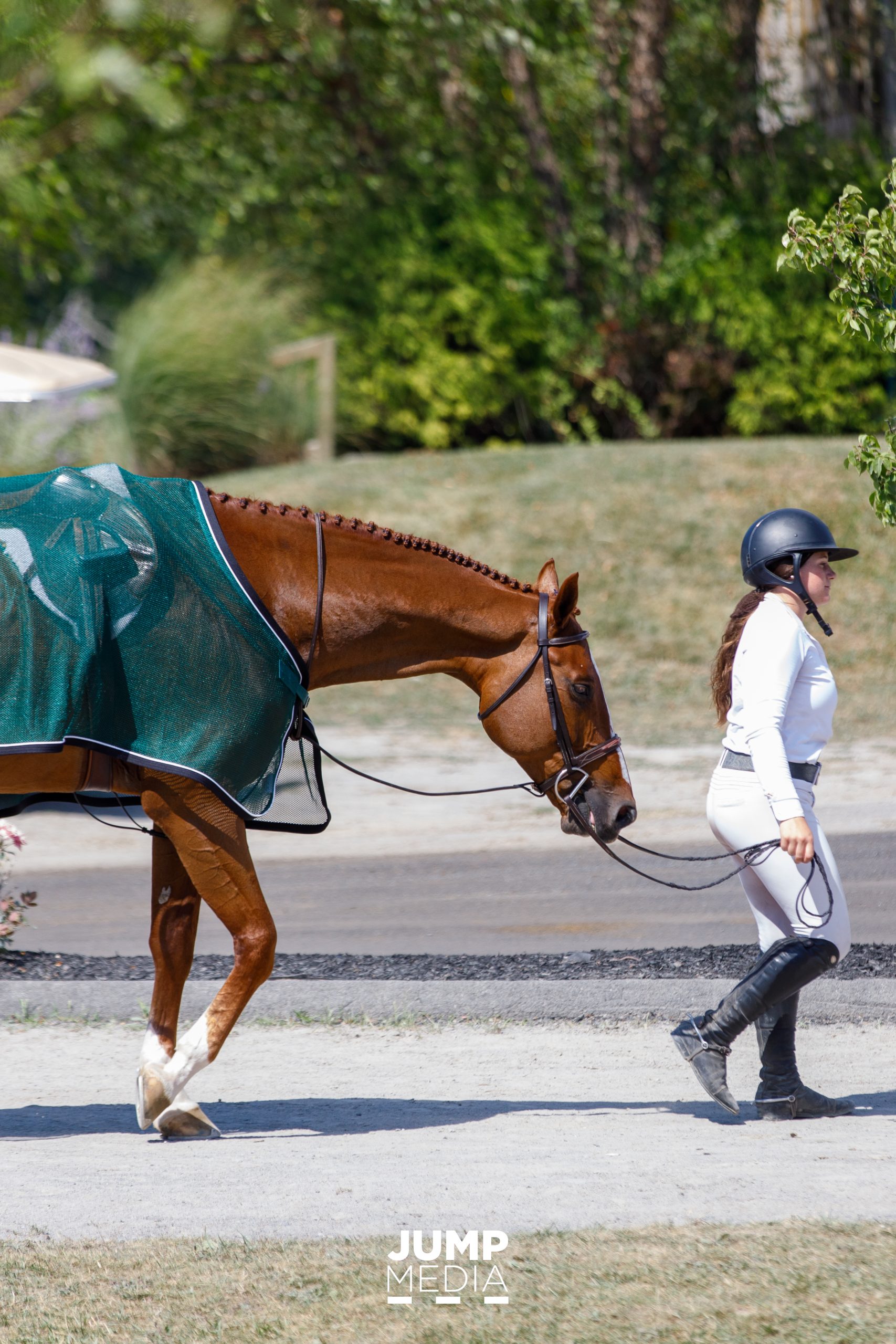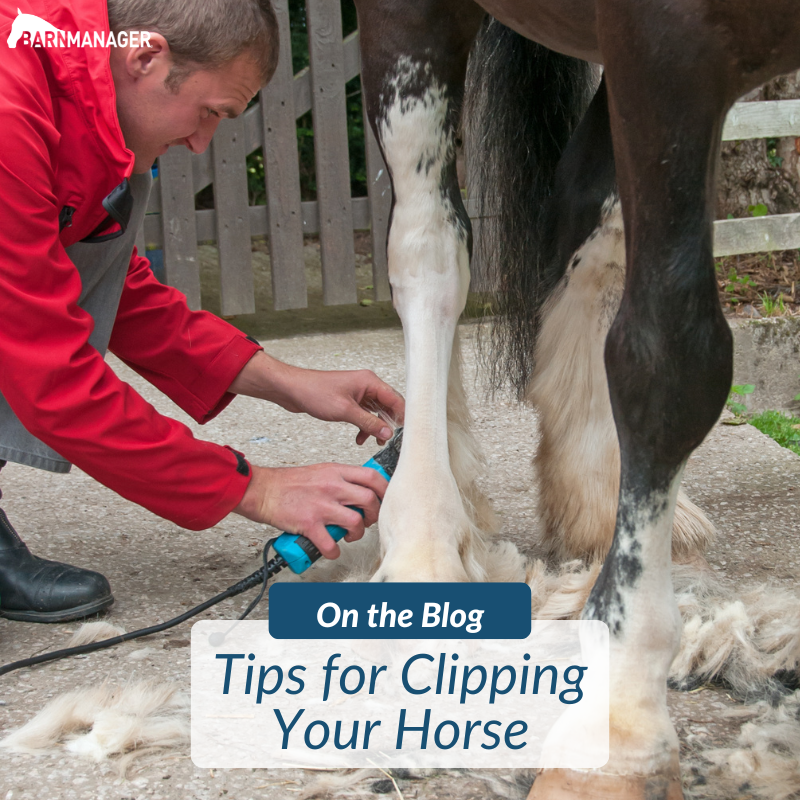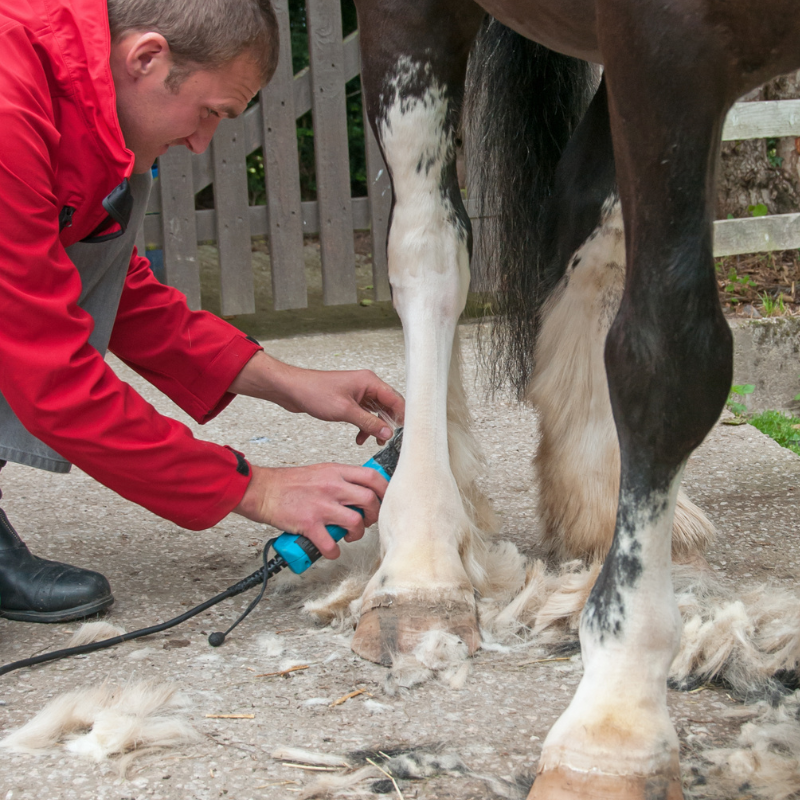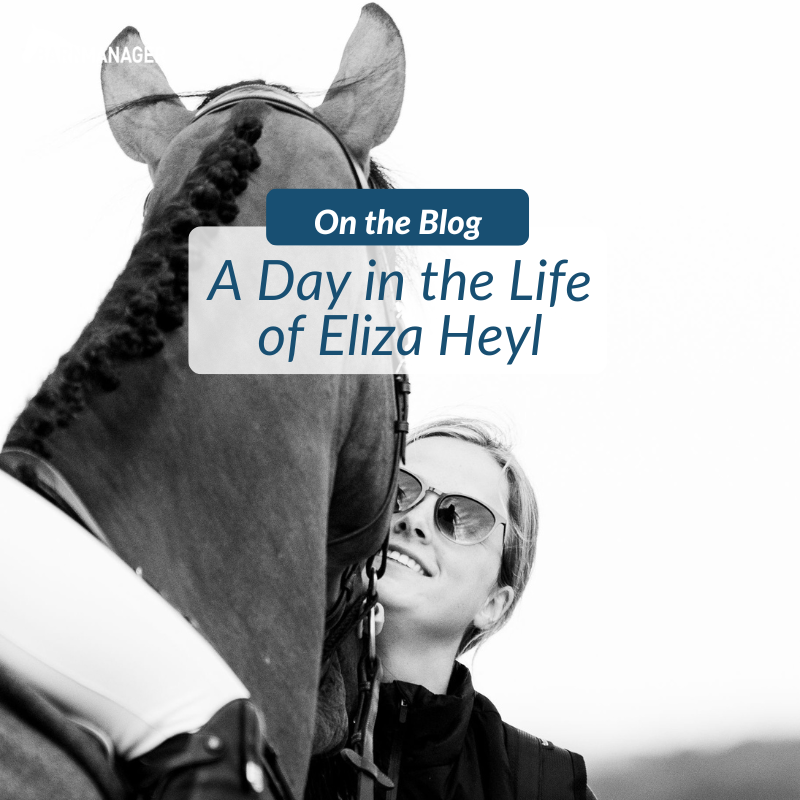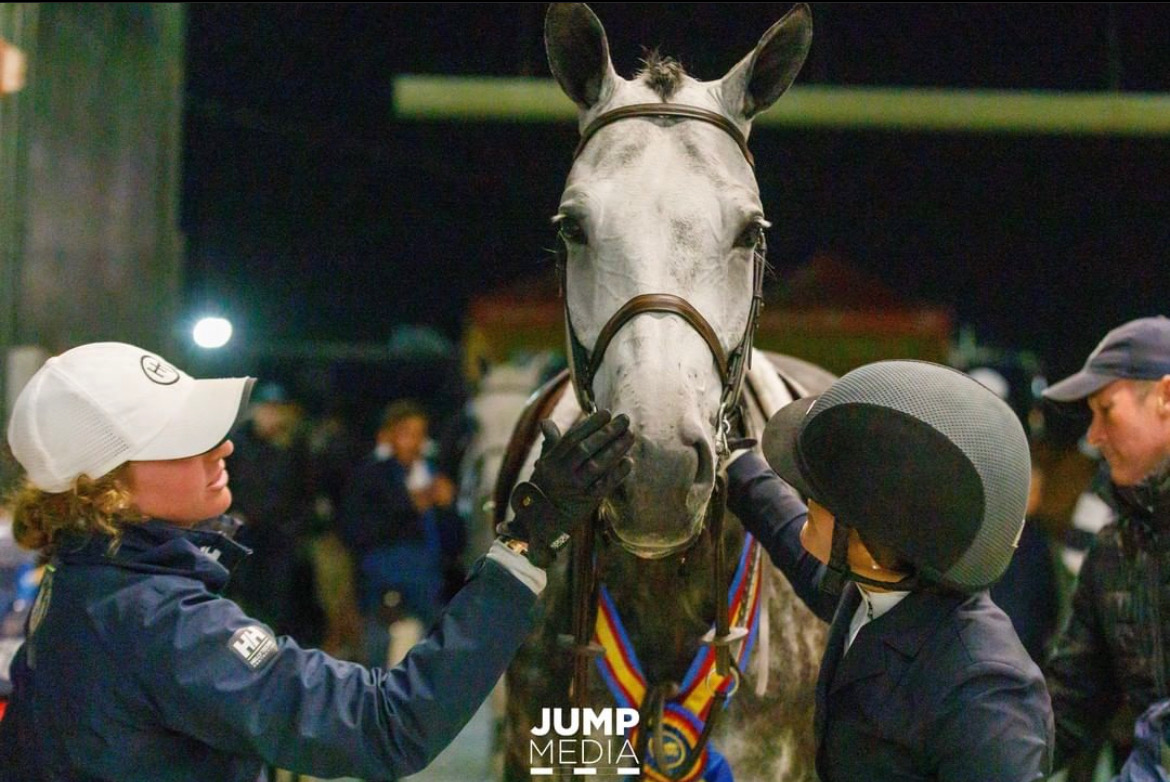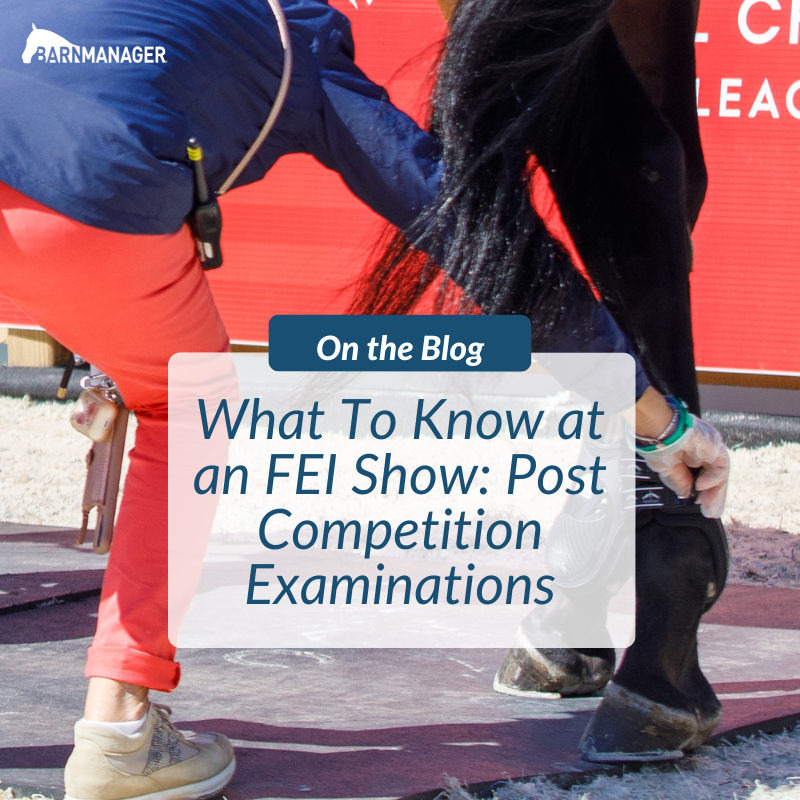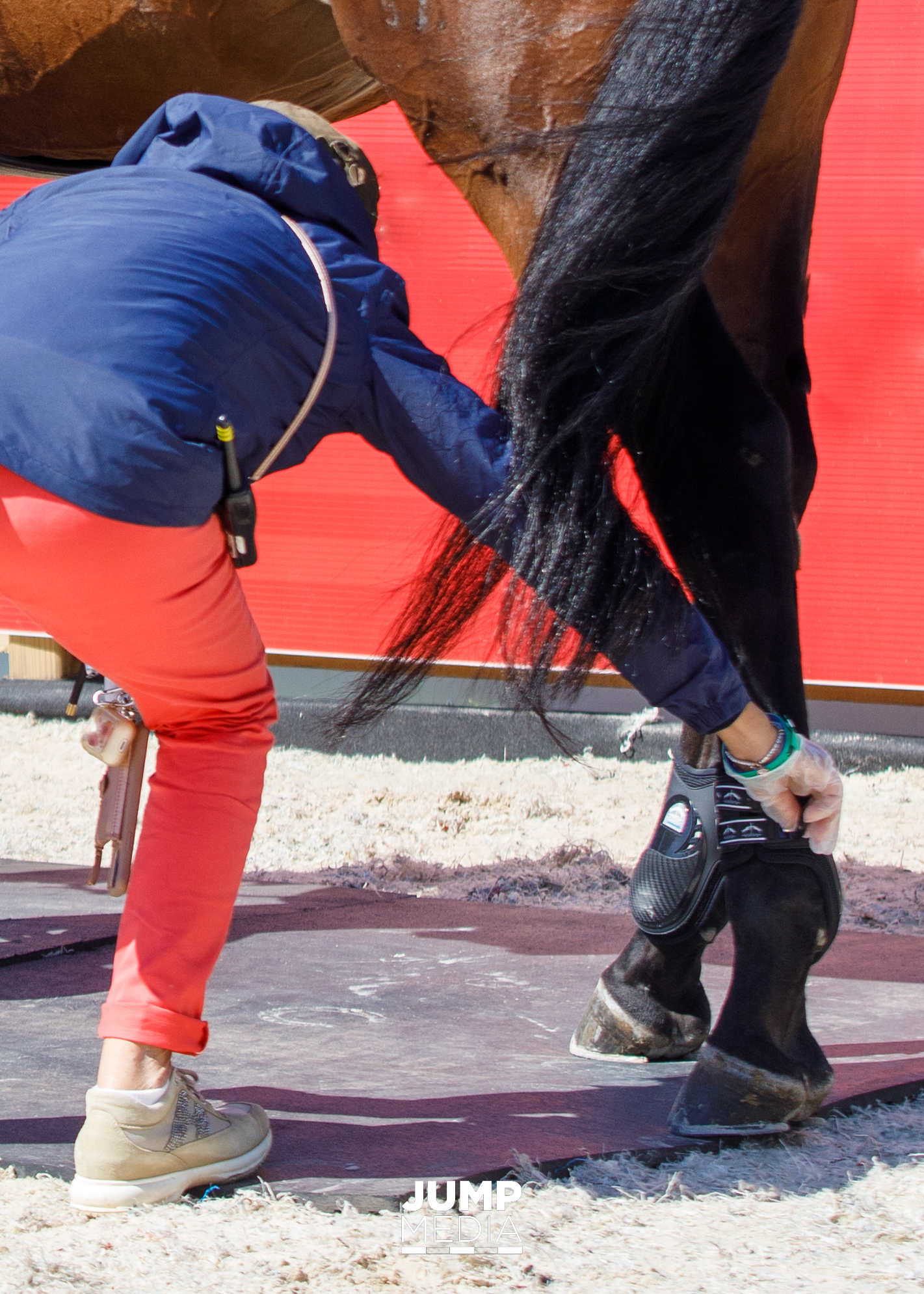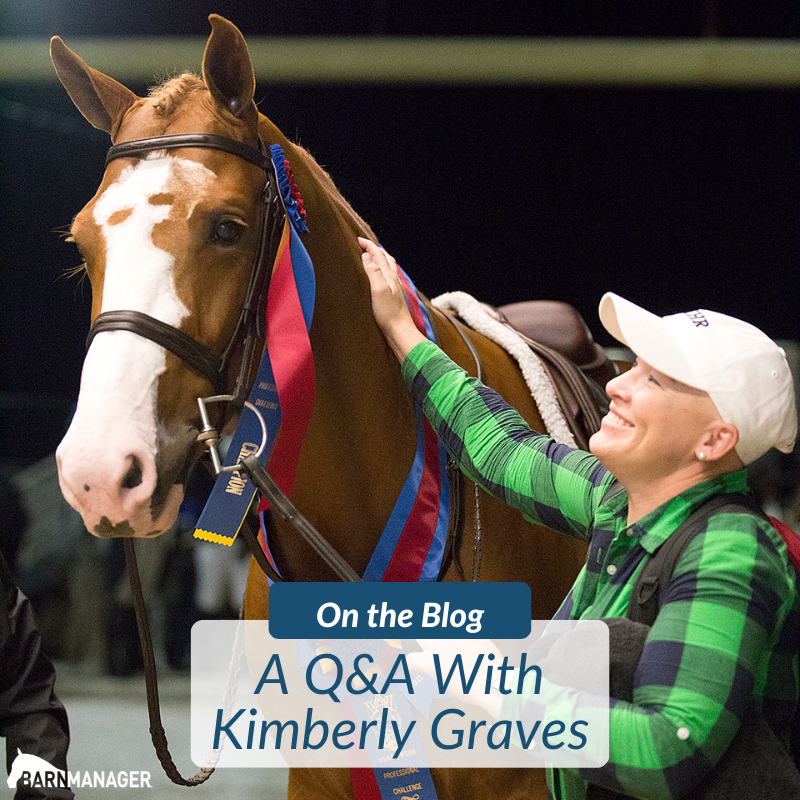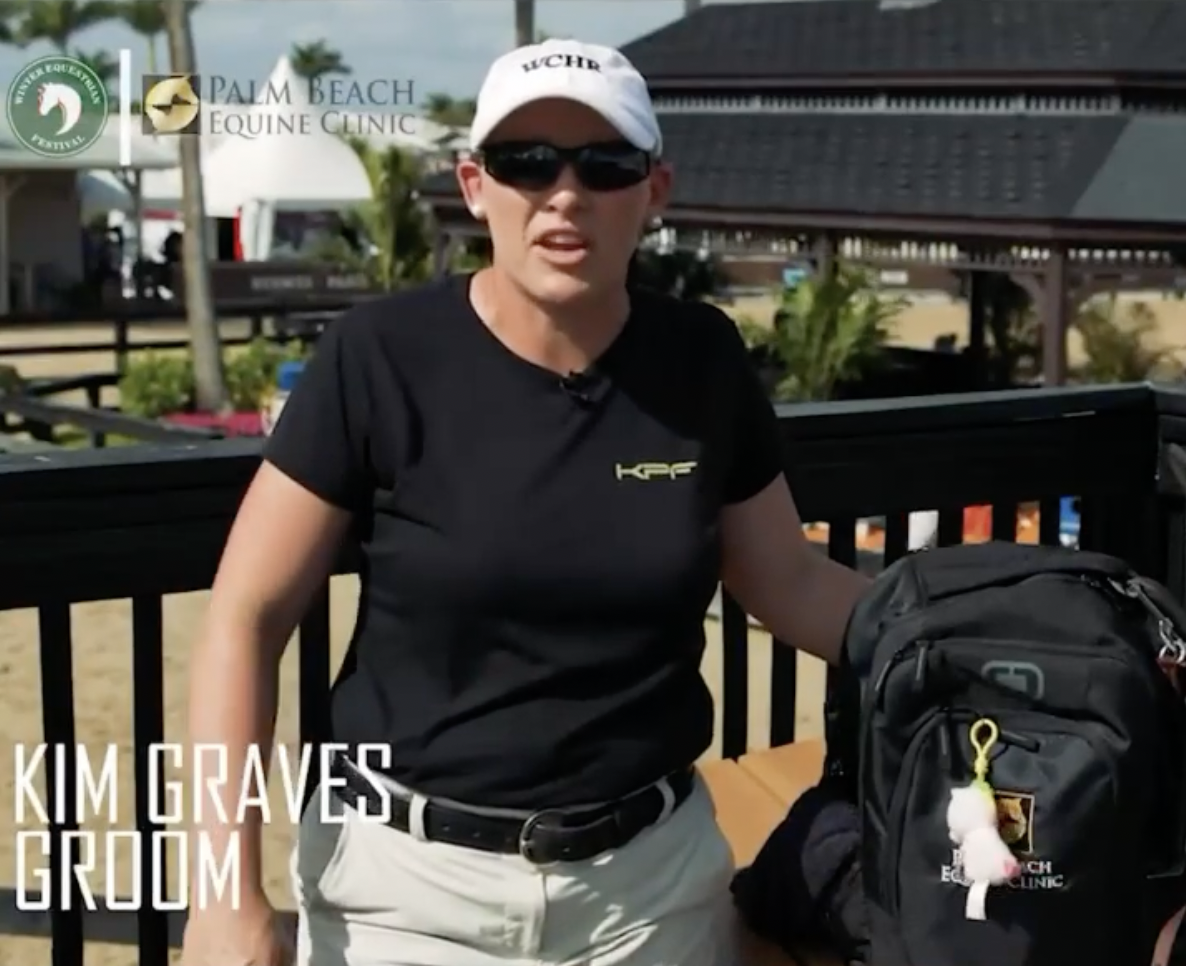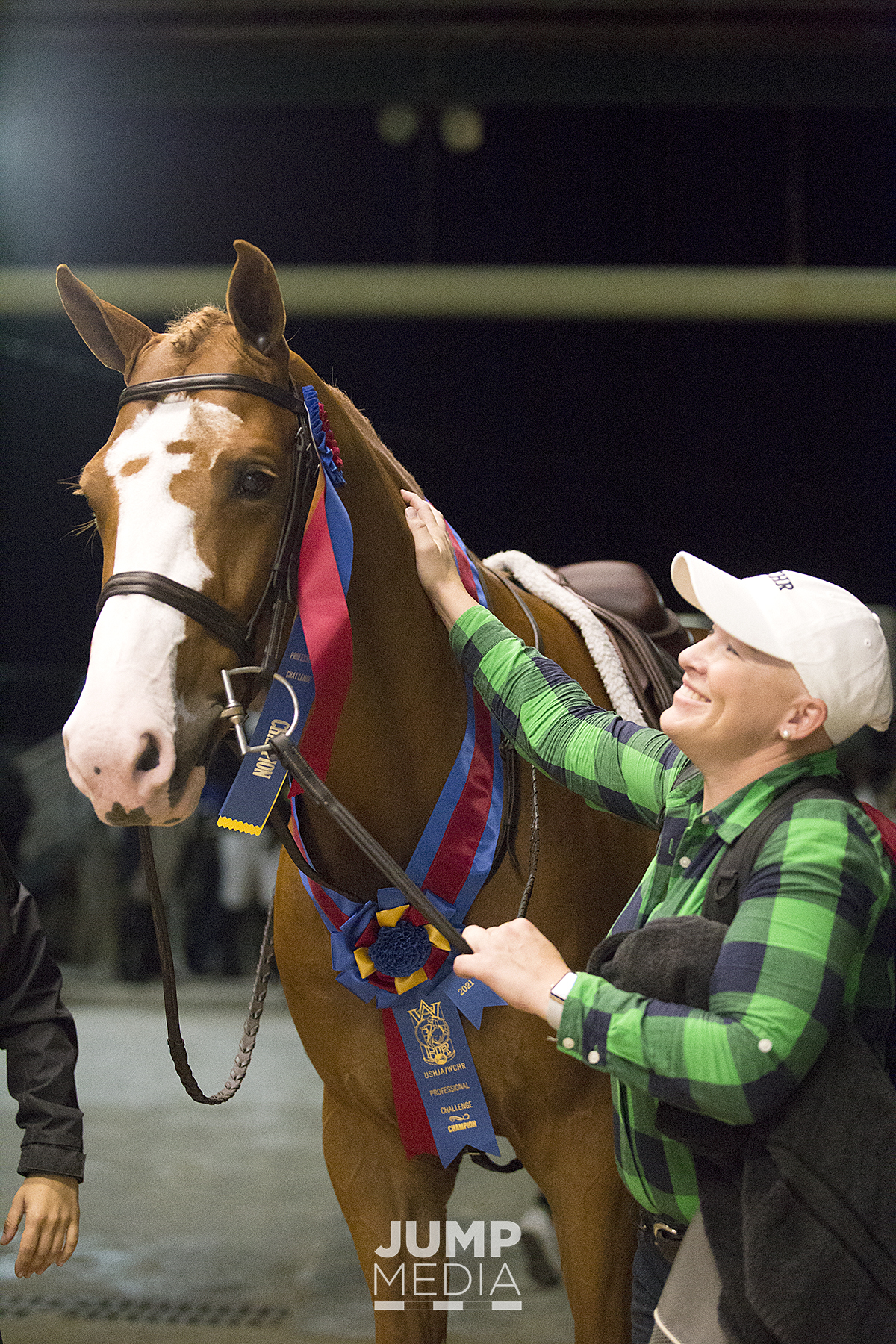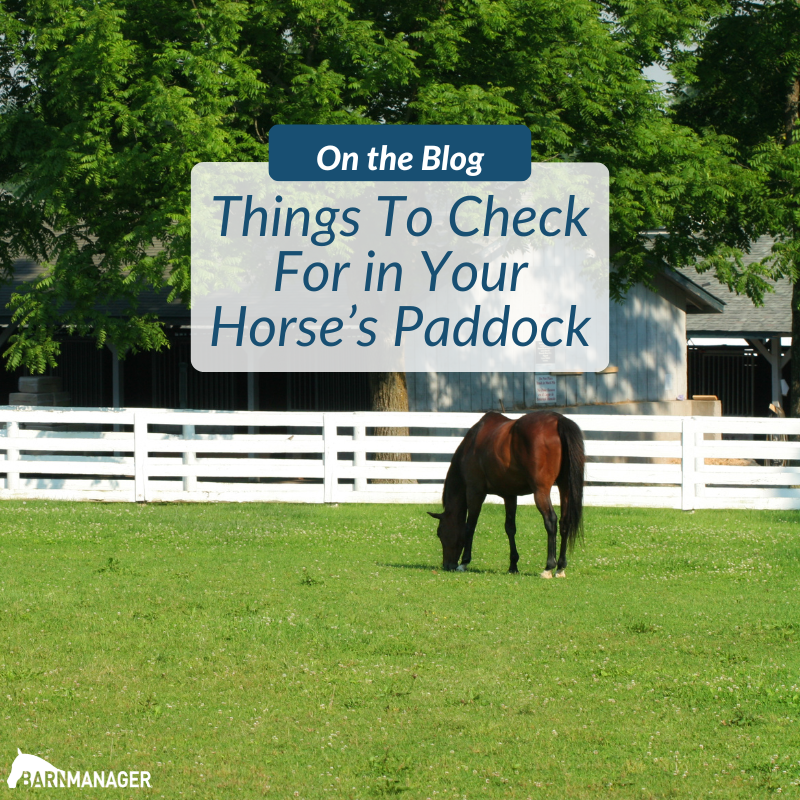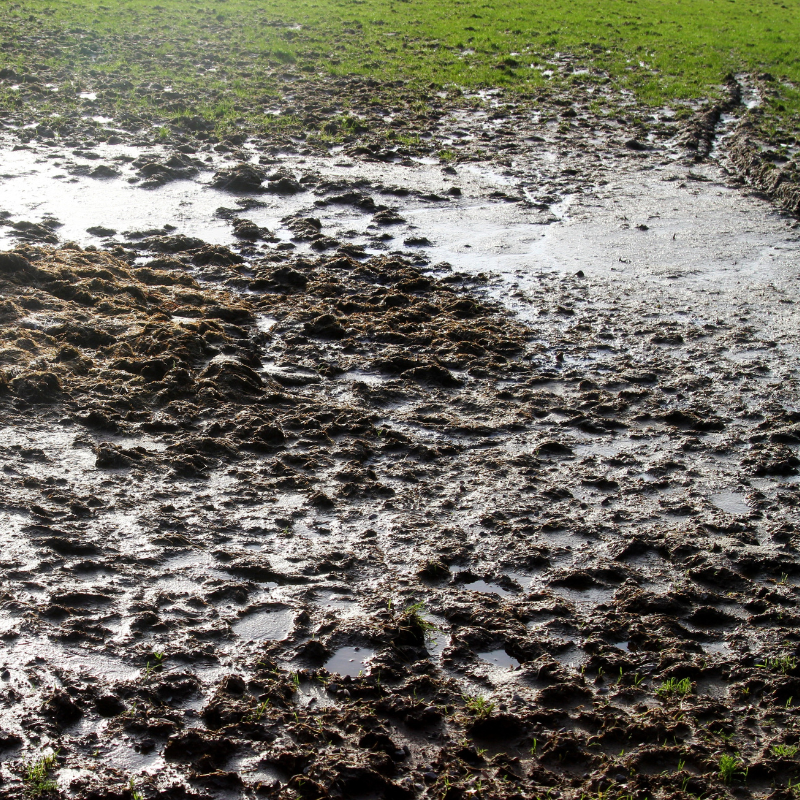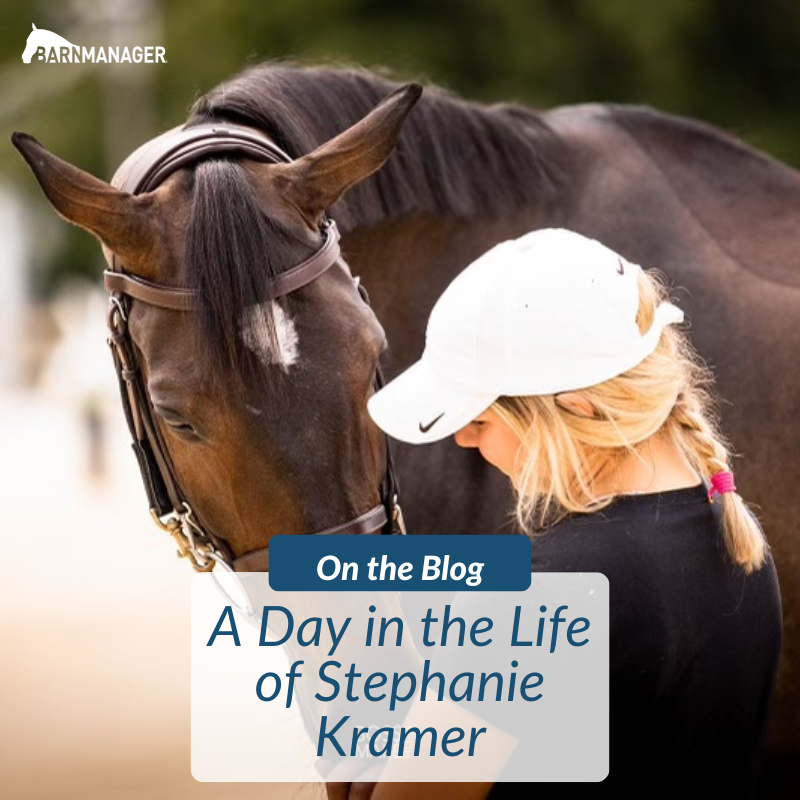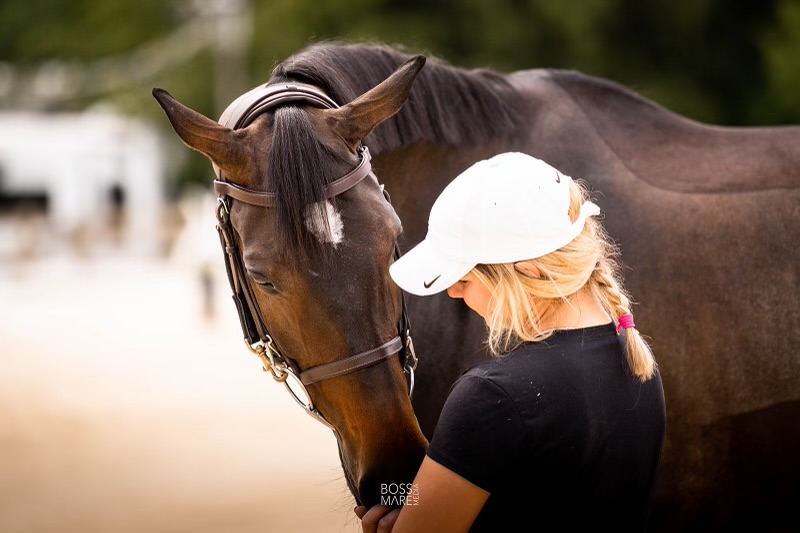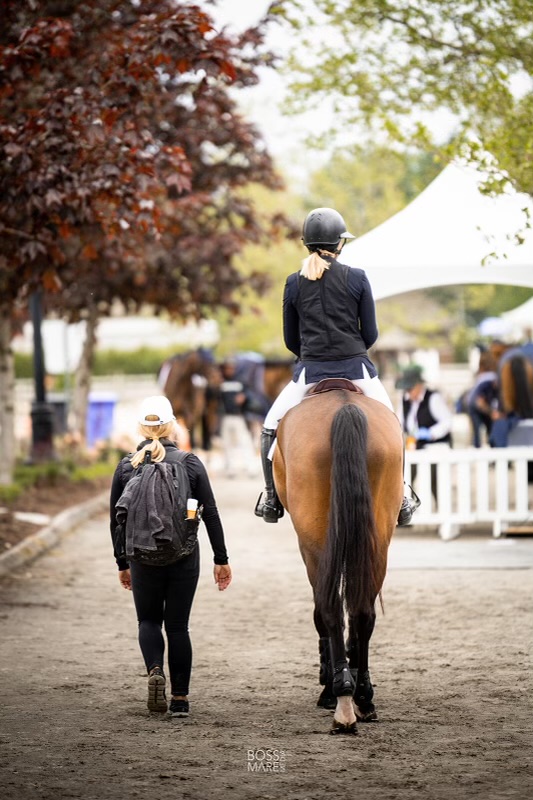Eliza Heyl is a groom for Coco Fath of Hillside Farm LLC, located in Wellington, FL, and Greenwich, CT. Keep reading for a day in Eliza’s life during Tryon Fall 6 show at the Tryon International Equestrian Center in Mill Spring, NC.
6 a.m.
I have a few alarms go off in the morning starting around six a.m. I’m not the type of person who gets up early with plenty of time to work out, make breakfast, and get going. I usually roll out of bed with just enough time to brush my teeth, get ready, and head out the door with my dog Penny.
7 a.m.
This week we are at Tryon where I have three horses showing at the FEI level and one horse at the national level. Gaucho is the national horse and Aventador 5, Chellasco Z, and Exotik Sitte are the three FEI horses. Coco’s trainer Vasco Flores of Highport Stables is showing Exotik Sitte, or “Scotty,” today and Coco is showing Aventador 5, or “Avi.” I start my day by giving all the horses their stomach pastes and beginning chores. We wait 30 minutes after giving their paste to feed them hay, and then wait another 15 minutes before giving their grain. After I give our national horse, Gaucho, his paste I head to the FEI stabling to start chores there. My manager, Lauren, helps me when the horses are split up like this. She will do Gaucho’s chores and get him out for a hand walk while I focus on the FEI horses. Once I get to the FEI stabling, I clean stalls, dump and refill waters, and sweep the aisle.
8:30 a.m.
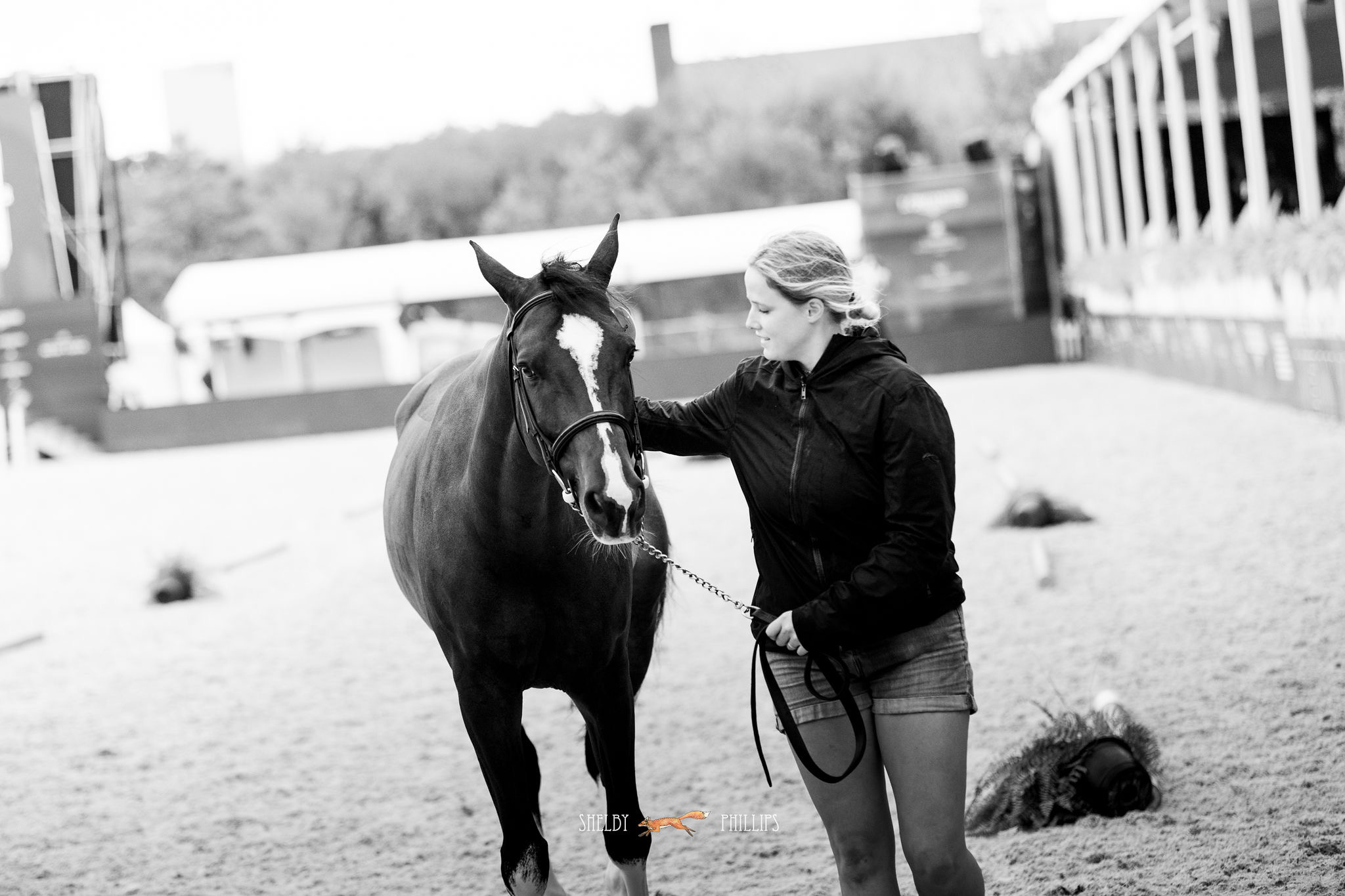
Photo by Shelby Phillips Photography
After chores are completed, I tack up Avi for Coco to ride before his class. Chellasco Z, known in the barn as “Chewy,” isn’t showing today so he will just hand walk before being ridden later. Vasco will ride Scotty around 11:30 a.m. After Avi and Scotty are finished being ridden, they will each get a bath so they are extra beautiful for their classes, and Chewy will just get groomed again.
I don’t like to wash manes on the days that horses are showing because it makes them too slippery to braid. My grooming routine is simple but thorough. Before pulling the horses out of their stall I always pick their feet to minimize the mess in the aisle and grooming stall. I start by spraying show sheen in their tail and letting it sit while I do everything else. I like to curry them with a grooming mitt because it allows me to get every inch of their body while also being gentle. After currying, I comb the mane before brushing the body so any sort of dirt or shavings in the mane does not fall on a clean coat. I then use a thick flick brush to get dust and dirt off followed by a soft face brush to bring out the shine. Lastly, I gently comb out the tail and clean the nostrils and eye area with a baby wipe.
11 a.m.
We feed lunch hay at 11 a.m. so I head over to feed the three boys in FEI and check their water. Lauren is over in National stabling getting Gaucho ready for Coco to ride so she will take care of his lunch for me.
Avi and Scotty are both showing in the $37,000 Welcome Stake CSI2* today and that starts at 1 p.m. Both horses are clean after their baths, but I still need to braid Avi and put flipped bands in Scotty’s mane. Avi’s neck is quite long with a thick mane, so I like to give myself as much time as possible to braid him so it looks neat and tidy. Before Vasco gets on Scotty at 11:30 I quickly band his mane and flip it so that all I need to do is quickly bathe him before he shows.
1 p.m.
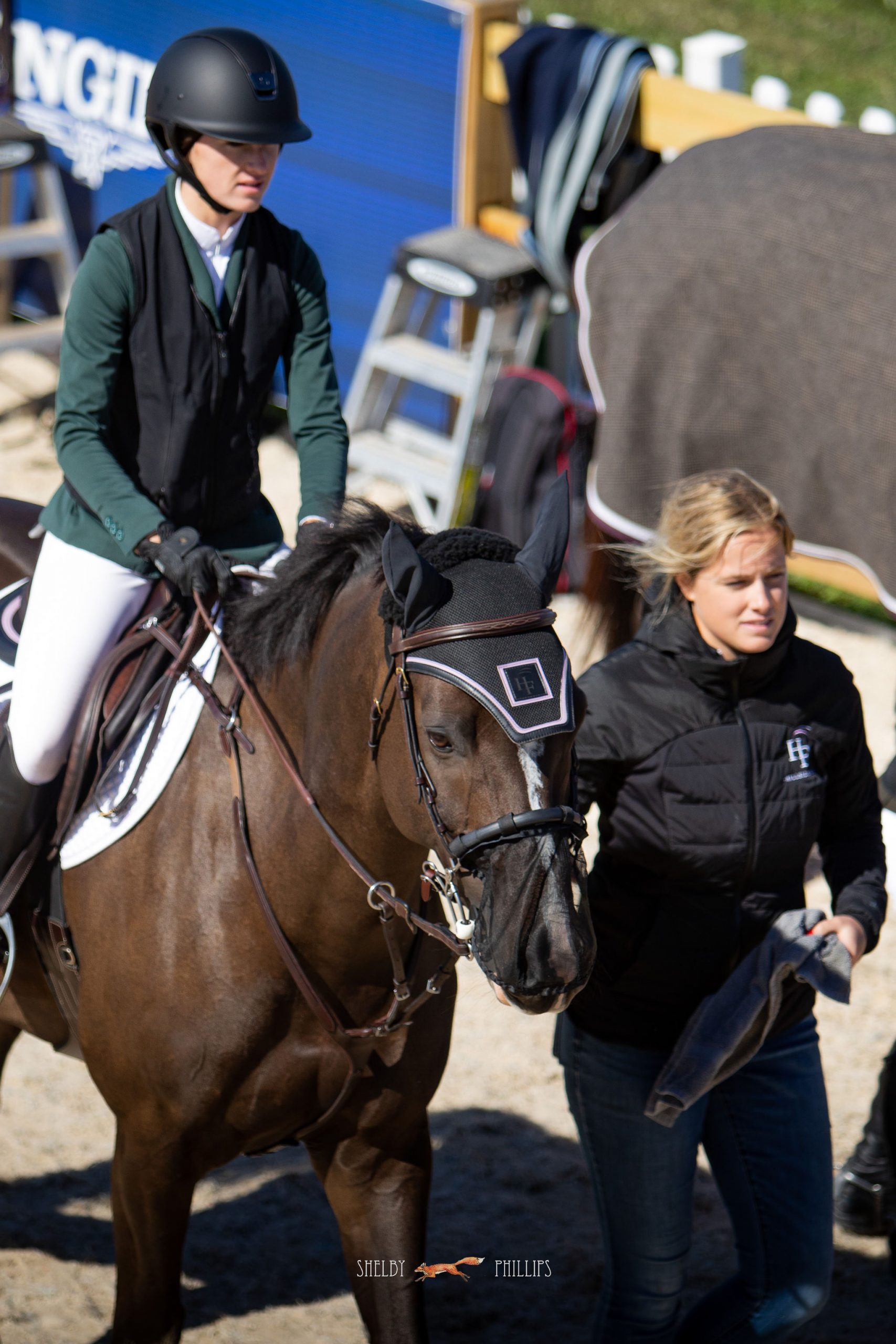
Photo by Shelby Phillips Photography
The welcome class starts and Avi goes early in the order, so I bring him to the ring about 15 minutes before the start of the class. For Avi, I do the boot check as soon as we get up to the ring. I also readjust the saddle, put Coco’s stirrups to jumping length, and remove the cooler so he is all ready for her to get on. I like to keep those last few minutes at the ring quiet and calm so both horse and rider are relaxed and focused going into the warm-up.
After I put Coco on Avi, I go back to the barn to get Scotty ready for Vasco. Lauren will stay with Coco to help in the warm-up and bring Avi back to the barn for me. Before I left with Avi, I made sure that Scotty already had grab boots and front boots on to save a little time. All I need to do is quickly brush any last-minute dust off, put the tack on him, and head to the ring.
Avi and Coco did not make it to the jump-off so when Lauren brings him back to the barn she quickly pulls his tack and boots off, puts him in his stall with a cooler, and wraps him in four ice boots before coming back up to the ring.
Vasco likes to warm up on Scotty before doing the boot check, so I wait a bit before asking a steward to watch while we put hind boots on him. Scotty jumped great but unfortunately had the last fence down, so he does not make it to the jump-off either. When my horses come out of the ring, I always give them a cookie and a pat. I then hold them while the stewards perform the post-boot check.
2 p.m.
By the time I come back to the barn it’s time to take off Avi’s ice boots. While Scotty relaxes in his stall with ice boots, I take care of Avi. It’s chilly today and he didn’t get very sweaty, so I just groom him really well and wipe in between his hind legs with alcohol to remove any sweat and sand. Next, I apply Tendonil to all four legs and wrap them. On their final day of jumping for the week, my horses will be wrapped with poultice up over their hocks, but for today Tendonil and wraps are all they need. I then remove his braids, wet his mane, and comb it out so it dries straight. I apply the same process to taking care of Scotty. My last step is to pick out their feet to remove any ring sand and pack them with hoof packing.
Once I’m finished with Avi and Scotty’s care, I groom Chewy and take him out for a hand walk. Normally I like to give them all time to have a bit more of a relaxed walk where they can graze but unfortunately there’s no grass at Tryon this time of year that’s available to the FEI horses.
3 p.m.
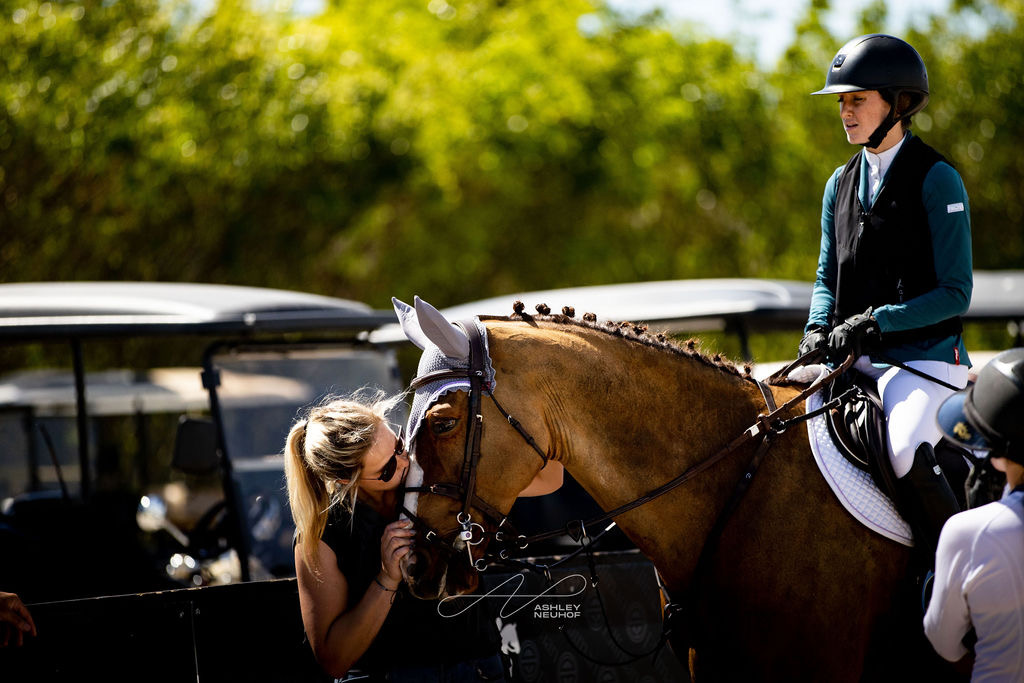
Photo by Ashley Neuhof Photography
Now that all of my horses are put away, I start afternoon chores. Everybody gets hay at 3 p.m. and then I clean their stalls, top off water buckets, and sweep the aisle. Dinner is fed at 3:30 p.m. While they are eating I clean tack, tidy up the grooming stall, and make sure everything is neat and in order.
4:30 p.m.
Today I am heading home around 4:30 p.m., which isn’t so bad for having two horses in an afternoon class! Some days I can finish up as early as 3:30 p.m. but some days it can be much later. It all just depends on our schedule.
8:30 p.m.
Once I’ve been home to shower, eat dinner, and decompress with some Netflix while snuggling my dog, I head back to the barn for night check. Tonight the temperature will drop to the mid-30s so my freshly clipped horses will get heavy and medium-weight stable blankets and the furrier ones will just get heavies. They all get a hefty flake of hay at night check, and I top off their water again. Before leaving I double check their doors are locked and wish them all a good night’s sleep!
Have questions about utilizing BarnManager or want to give it a try for yourself? Request a live demo here!
BarnManager is designed to be a part of your team, with the compatibility and credentials necessary to improve communication, simplify the management of horses, and get you out of the office, off the phone calls, and into the barn with the horses you care about! Click here to get a free demo and find out more!
